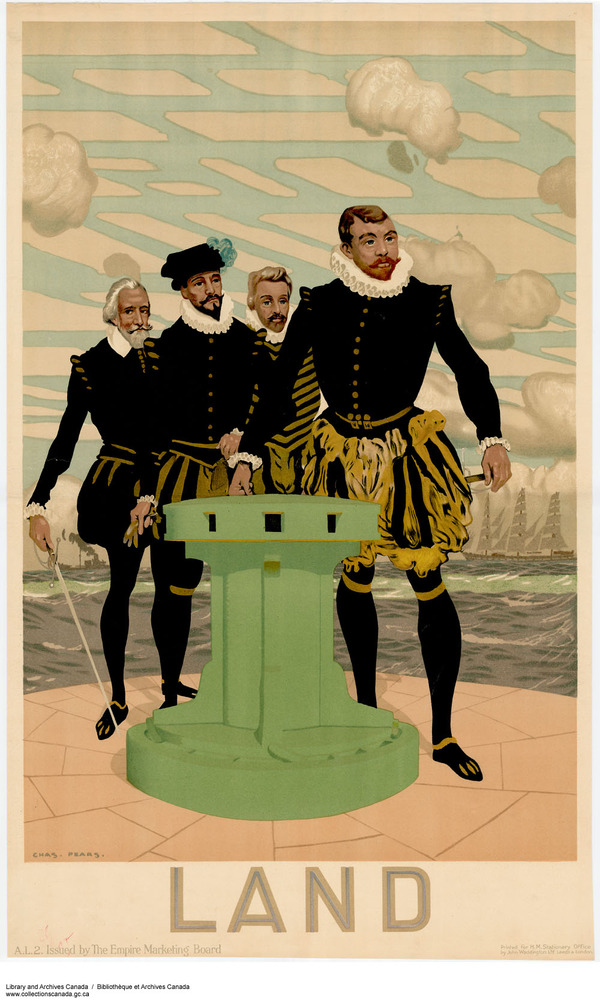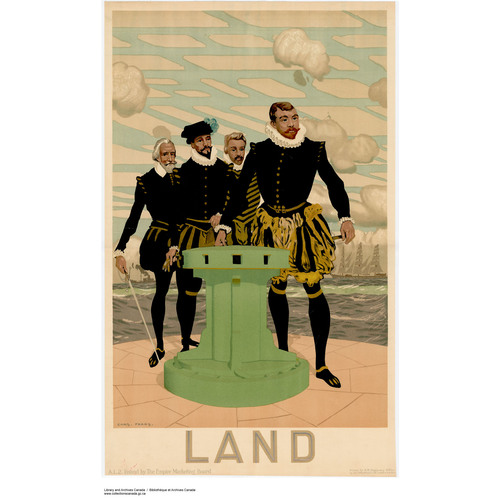THORNE, ROBERT, the elder (d. 1519), and his son ROBERT THORNE the younger (1492–1532), Bristol merchants associated with early voyages to America.
The elder Thorne was trading actively from Bristol to Spain, Portugal, Iceland, and elsewhere for nearly 40 years from 1479 onwards. In 1501 he was associated with Hugh Eliot in the purchase of a ship; in 1510 he was a member of an admiralty commission for Bristol and he was mayor in 1515. He died in London in 1518, was buried in the Temple Church, and left money for the endowment of a grammar school in Bristol. His son, Robert the younger, also a merchant, moved to London and thence, shortly after 1520, to Seville, where he lived as a factor and merchant. He invested in Sebastian Cabot’s expedition of 1526 and returned to England by 1531, but died in 1532, leaving a large fortune.
The younger Robert in 1527 stated of his father that he “with an other Marchaunt of Brystow named Hughe Elliot were the discoverers of the Newfound Landes.” This statement appears to have been made in good faith, but its meaning is not certain. It could mean an independent discovery prior to the time of John Cabot, which is now not unlikely in view of John Day’s statement in 1498 that the English had made a transatlantic discovery “in other times,” conceivably in 1481 [see Croft]. Between 1577 and 1580 Dr John Dee dated the alleged Thorne-Eliot voyage as “Circa An. 1494,” though it is doubtful if he had evidence for doing so [see discussion of Sebastian Cabot’s map of 1544 in John Cabot]. It has also been thought that Thorne and Eliot may have been leading participants in the Cabot voyage of 1497. The elder Thorne is indeed likely to have been associated in the Cabot voyages and, most probably, with those of 1501–5, in association with Hugh Eliot. The younger Thorne was especially interested in the prospect of finding an English route to the Far East. In 1527 he compiled a “Declaration of the Indies,” with a map, and sent them with a letter to Edward Lee, the English ambassador, for transmission to Henry VIII, in which he put forward a comprehensive scheme for an approach to Asia northward from England (and including the statement about his father). At his return from Spain he had a ship almost prepared for an exploring voyage when he died.
Roger Barlow, A brief summe of geographie, ed. E. G. R. Taylor (Hakluyt Soc., 2d ser., LXIX, 1932). G. Connell-Smith, Forerunners of Drake (London, 1954). G. C. Moore-Smith, “The Withypoll family,” Walthamstow Antiq. Soc. Pub., XXXIV (1936). Williamson, Cabot voyages (1962); Voyages of the Cabots (1929).
Cite This Article
David B. Quinn, “THORNE, ROBERT (1492-1532),” in Dictionary of Canadian Biography, vol. 1, University of Toronto/Université Laval, 2003–, accessed December 31, 2025, https://www.biographi.ca/en/bio/thorne_robert_1492_1532_1E.html.
The citation above shows the format for footnotes and endnotes according to the Chicago manual of style (16th edition). Information to be used in other citation formats:
| Permalink: | https://www.biographi.ca/en/bio/thorne_robert_1492_1532_1E.html |
| Author of Article: | David B. Quinn |
| Title of Article: | THORNE, ROBERT (1492-1532) |
| Publication Name: | Dictionary of Canadian Biography, vol. 1 |
| Publisher: | University of Toronto/Université Laval |
| Year of publication: | 1966 |
| Year of revision: | 1979 |
| Access Date: | December 31, 2025 |




